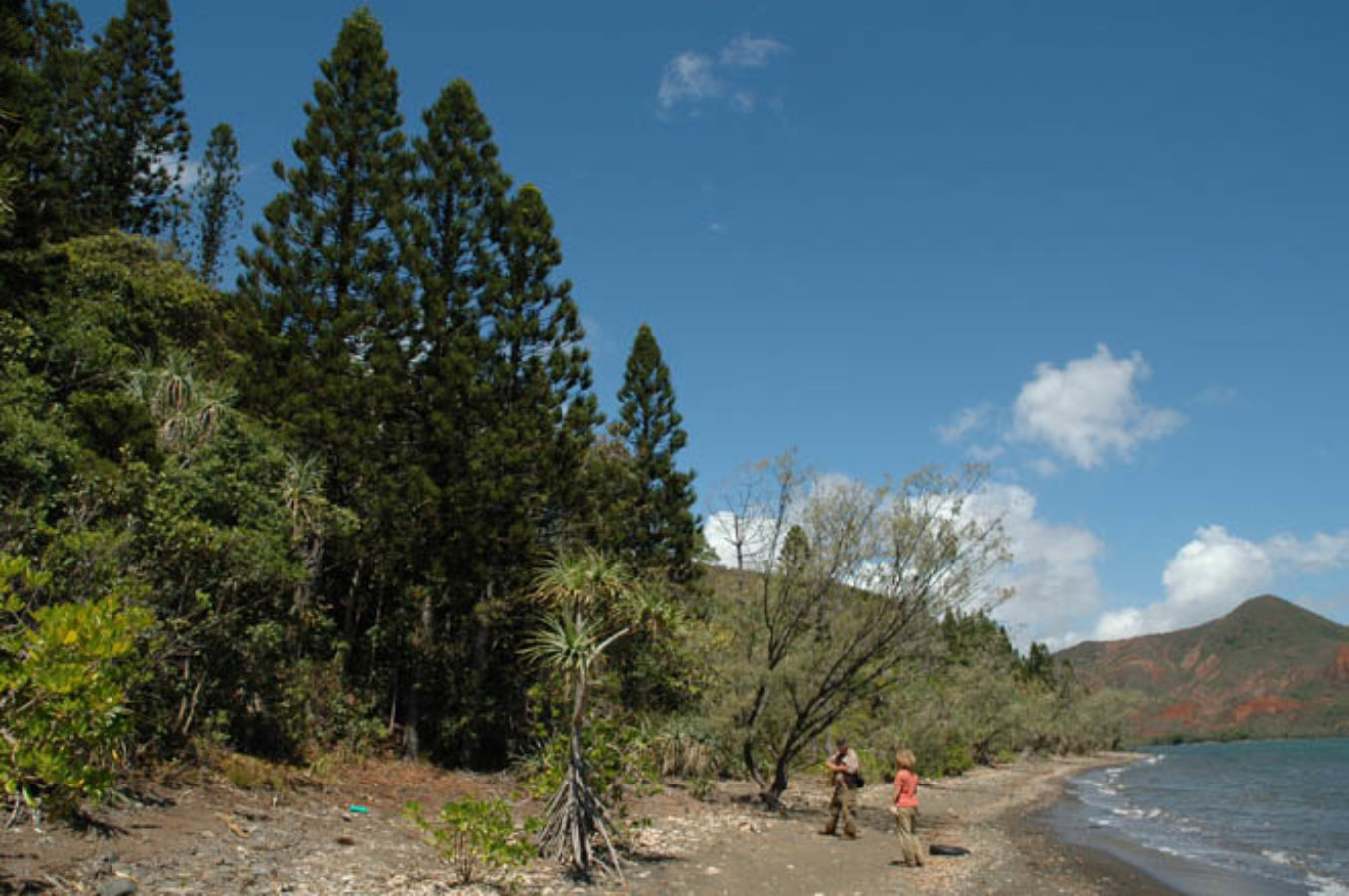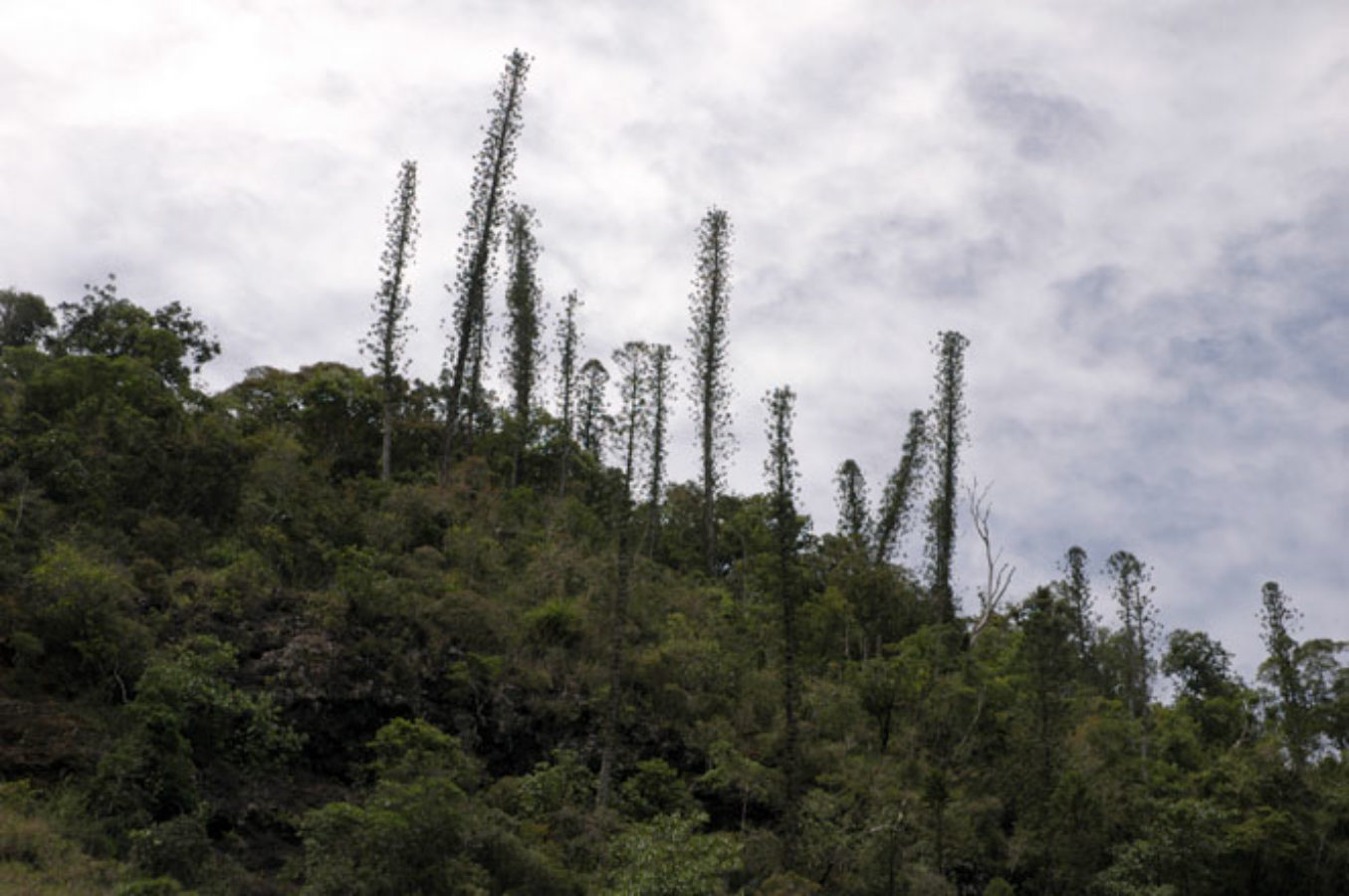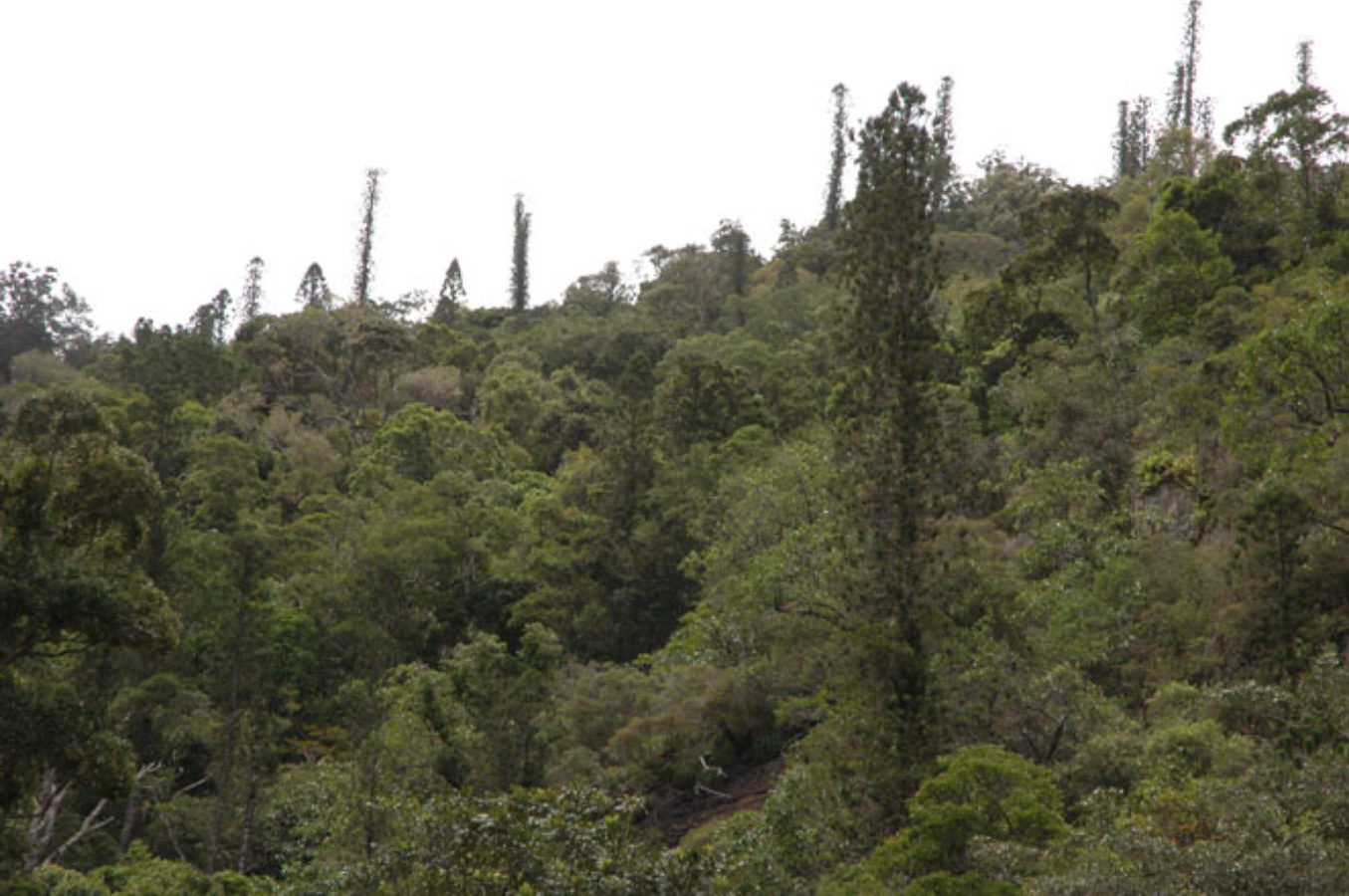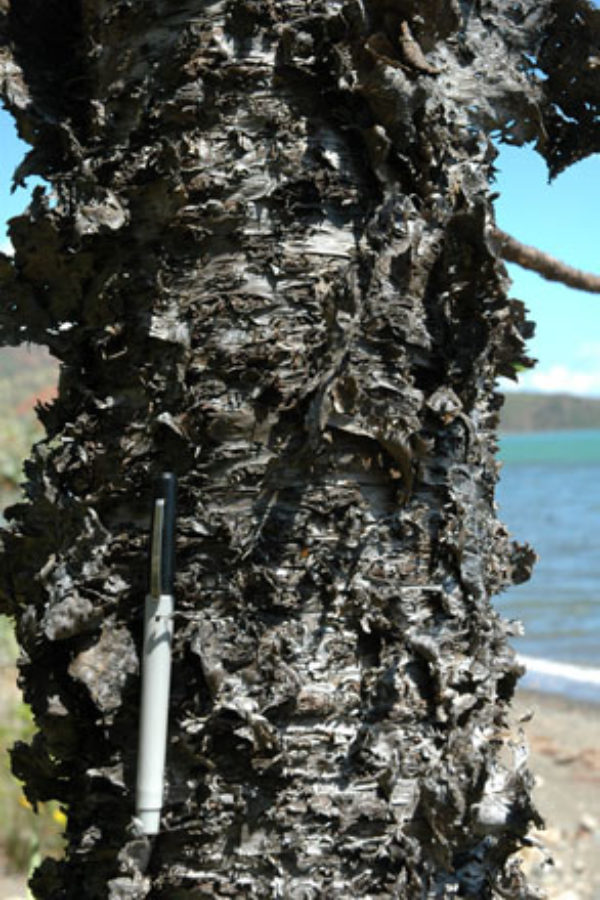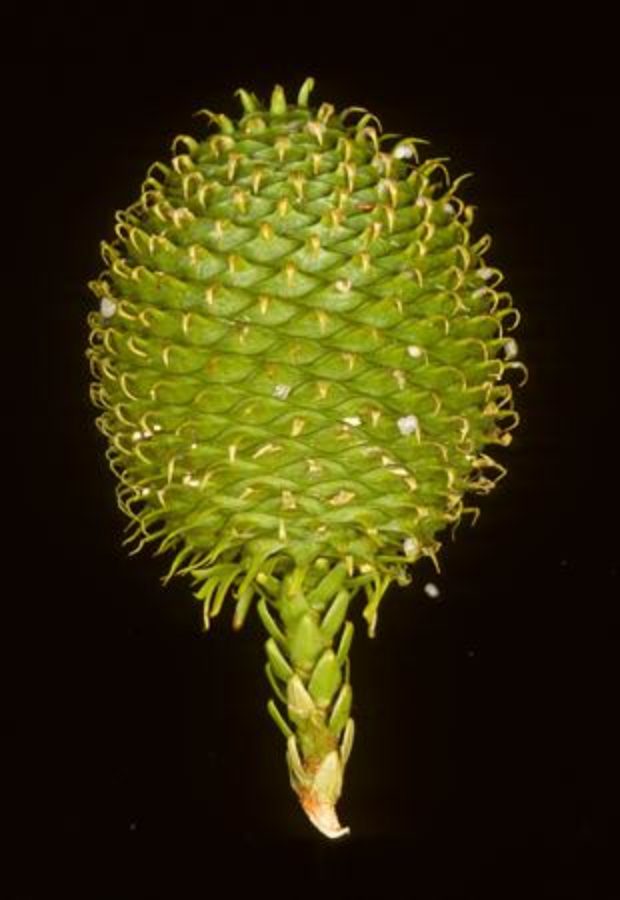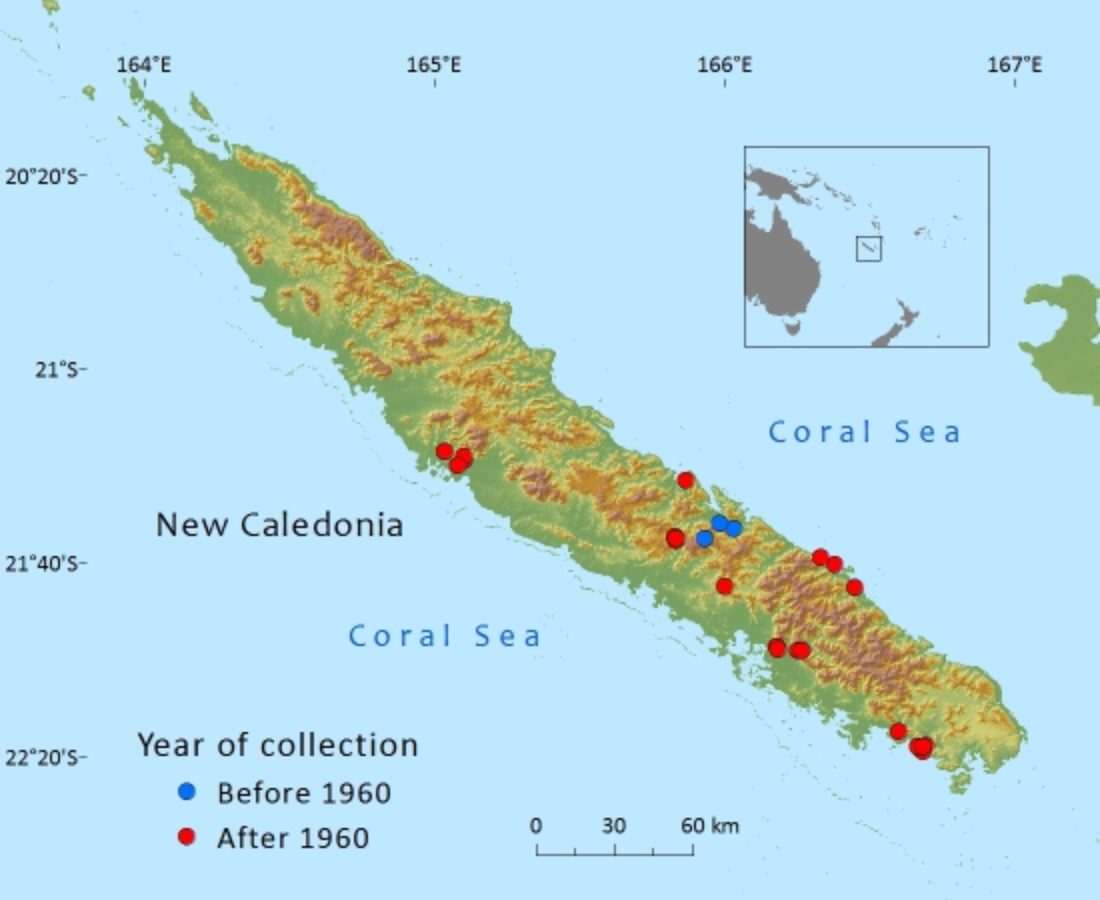Araucariaceae
Araucaria luxurians
One of 13 species of Araucaria endemic to New Caledonia where it occurs on the main island of Grande Terre; threats include mining, fire, erosion and urbanisation.
Description
Habit
A monoecious tree up to 40m tall, with a diameter up to 70cm at maturity. Narrowly conical or pyramidal at maturity. The thick grey bark produces a red exudate and peels in horizontal plates.
Foliage
The adult leaves are oblong, ovate, subulate or narrowly lanceolate with a rounded apex, to 1cm long, and 1–3mm wide. Adult foliage can vary In size and shape on the same branch. Foliage is usually clustered on small branches at the end of primary branches. Stomata on the outer surface (abaxial) of the adult leaves are in rows from the base to the apex. (×10 lens needed)
Cones
Female seed-cones,terminal borne on very short branches, subglobose, 10-12 x 8-10cm wide, bracts up to 10mm long, tips straight, ripening from January to mid-February. Male pollen-cones terminal in the upper part of the tree, up to 15cm long, mature from May to mid-July.
Human Uses
This species is widely cultivated on New Caledonia for its ornamental value. Outside of New Caeldonia, it is very rare in cultivation and confined to botanical collections either under glass or outside in milder climates.
References and further reading
- de Laubenfels, D. J. (1972). Gymnospermes. In: Aubréville, A. & Leroy, J.-F. (eds.), Flore de la Nouvelle-Calédonie et Dépendances, 4. Paris: Muséum National d’Histoire Naturelle. 167 p.
- Gaudeul, M., Rouhan, G., Gardner, M.F. & Hollingsworth, P.M. (2012). AFLP markers provide insights into the evolutionary relationships and diversification of New Caledonian Araucaria species (Araucariaceae). American journal of Botany 99(1):68-81.
- Jaffré, T., Bouchet, P. & Veillon, J.–M. (1998). Threatened plants of New Caledonia: Is the system of protected areas adequate? Biodiversity & Conservation 7(1): 36.
- Jaffré, T., Munzinger, J. & Lowry, P.P. (2010). Threats to the conifer species found on New Caledonia's ultramafic massifs and proposals for urgently needed measures to improve their protection. Biodiversity & Conservation 19(5):1485-1502.
- Manauté, J., Jaffré, T., Veillon, J.-M. & Kranitz, M. (2003). Revue des Araucariaceae de Nouvelle-Calédonie. IRD, Nouméa.
- Nasi, R. (1982). Essai pour une meilleure connaissance et une meilleure comprehension des Araucariacées dans la végétation Calédonienne. Nouméa: École Nationale des Ingénieurs des Travaux des Eaux et Forêts, Centre Technique Forestier Tropical. 134 p., 10 plates, 44 p. appendices.
- Thomas, P. (2010). Araucaria luxurians. In: IUCN 2012. IUCN Red List of Threatened Species. Version 2012.1. www.iucnredlist.org . Downloaded on 29 June 2012.
